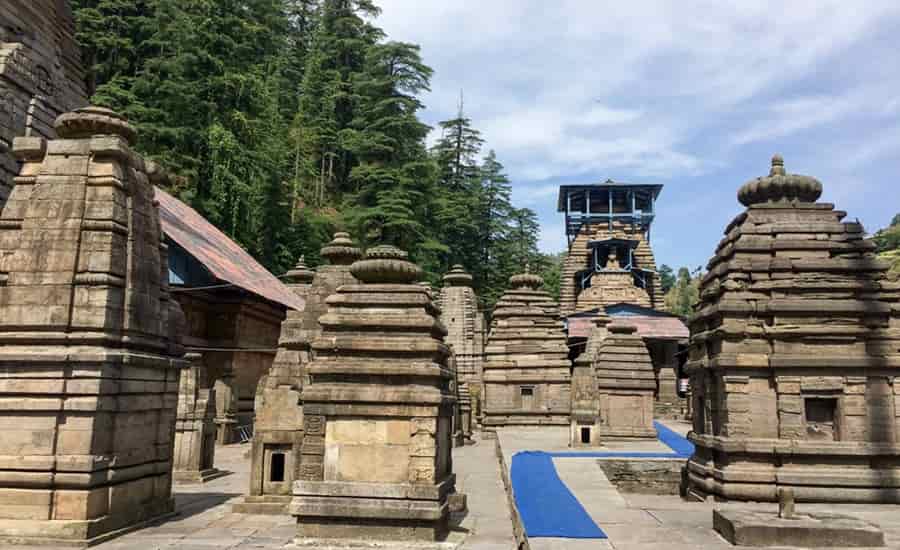History of Jageshwar Temple
Nestled amidst the pristine beauty of the Himalayan foothills in the Indian state of Uttarakhand, the Jageshwar Temple complex stands as a testament to the rich cultural and religious heritage of the region. With its ancient roots dating back to centuries, the temple has witnessed the ebb and flow of time, preserving not only architectural marvels but also spiritual traditions. In this exploration, we embark on a historical journey of Jageshwar Temple, unraveling its past, significance, and the enduring legacy it has imprinted on the landscape.

Historical Origins
The history of Jageshwar Temple is deeply entwined with the cultural tapestry of ancient India. The temple complex, dedicated to Lord Shiva, is believed to have been constructed between the 7th and 12th centuries. The name “Jageshwar” itself is derived from “Jagesh,” one of the many names of Lord Shiva, signifying the ‘Lord of the Universe.’
According to historical accounts, the region around Jageshwar was once a prominent center for religious and cultural activities during the Chand dynasty rule. The Katyuri kings, who reigned in the Kumaon region, are credited with the construction and patronage of the temple complex. The intricate stone carvings and architectural nuances bear the hallmark of the Kumaoni style, showcasing the blend of indigenous and external influences.
Architectural Marvels
The Jageshwar Temple complex comprises a cluster of around 124 temples, with the primary deities being Lord Shiva in various forms. The architecture reflects the Nagara style prevalent during the medieval period, characterized by tall spires, intricate carvings, and exquisite sculptures. The temples are constructed using local schist stone, contributing to the rustic charm that defines the entire complex.
The main shrine, dedicated to Jageshwar (Lord Shiva), features a lingam, a symbol of divine energy, housed within a sanctum sanctorum. The outer walls of the temple are adorned with captivating sculptures depicting various mythological scenes, celestial beings, and deities, providing a visual narrative of Hindu mythology.
Significance in Hindu Mythology
Jageshwar holds immense significance in Hindu mythology, and several legends surround the origin and sanctity of the temple. One such legend attributes the establishment of the temple to Adi Shankaracharya, a revered philosopher and theologian of the 8th century. It is believed that Shankaracharya meditated in the serene environs of Jageshwar, and the consecration of the temples was a result of his spiritual endeavors.
The location of Jageshwar, surrounded by dense deodar forests and the confluence of rivers, adds to its sacred aura. The temple complex is also considered one of the twelve Jyotirlingas, symbolizing the manifestations of Lord Shiva. Pilgrims and devotees flock to Jageshwar to seek spiritual solace and participate in rituals that have been passed down through generations.
Cultural and Artistic Heritage
Beyond its religious significance, Jageshwar Temple stands as a repository of cultural and artistic heritage. The intricate carvings on the temple walls depict scenes from the epics like the Ramayana and Mahabharata, showcasing the artistic prowess of the craftsmen of yore. The sculptures are not merely decorative but serve as a visual encyclopedia of Hindu mythology, providing a glimpse into the cultural ethos of the times.
The annual Jageshwar Monsoon Festival, held in the temple complex, is a celebration of the rich cultural heritage of the region. The festival features traditional music, dance performances, and rituals that attract both locals and tourists, fostering a sense of community and shared heritage.
Challenges and Conservation
Despite its historical and cultural significance, Jageshwar Temple faced the ravages of time and neglect over the centuries. Weathering, natural disasters, and encroachment posed serious threats to the structural integrity of the temples. In recent decades, concerted efforts by archaeological and heritage conservation bodies have been made to preserve and restore the temple complex.
The Archaeological Survey of India (ASI) and various state agencies have undertaken initiatives to document, conserve, and restore the temples. The meticulous restoration work involves stabilizing structures, cleaning and repairing carvings, and implementing measures to protect against environmental factors. These efforts aim to ensure that the architectural splendor and spiritual sanctity of Jageshwar endure for future generations.
Conclusion
Jageshwar Temple, with its ancient roots and architectural grandeur, stands as a living testament to India’s rich cultural and religious heritage. The journey through its history reveals not just the evolution of a sacred site but also the intertwining of spirituality, art, and community. As efforts continue to preserve and protect this historical gem, Jageshwar remains a beacon of spiritual enlightenment and a bridge connecting the present to the ancient past. The echoes of hymns and prayers that resonate within its walls serve as a reminder of the enduring legacy of Jageshwar Temple.
Also Read







